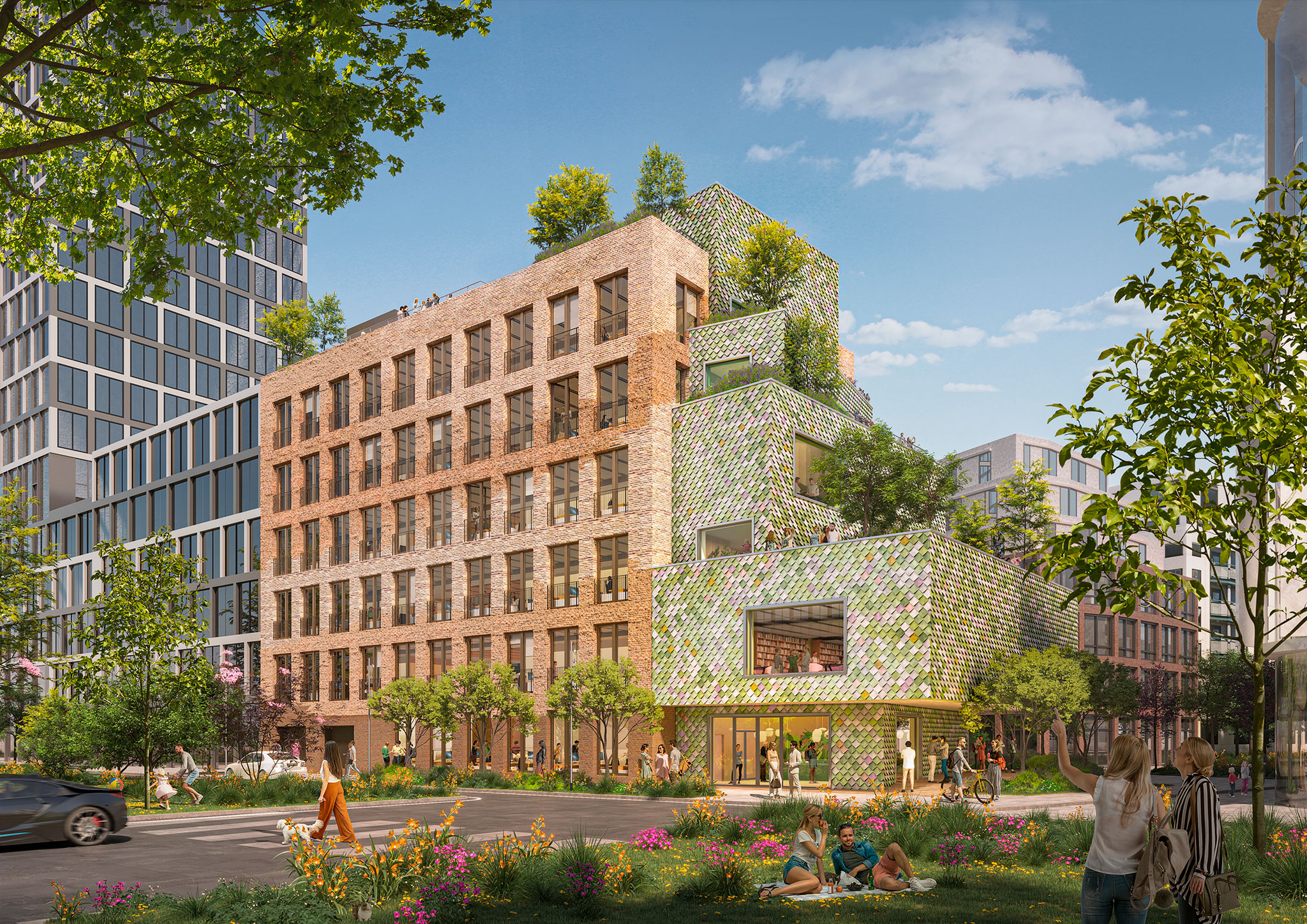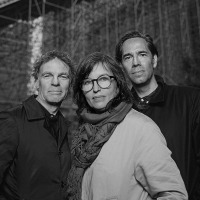
In an area where the mix of new buildings and transformations on industrial structures has given rise to an eclectic selection of architectural styles, MVRDV proposes to add a warm, playful and colourful accent through a cubic block clad in brick, while bringing a circular and sustainable approach to the building facades from a solution at the forefront of workplace trends, providing more freedom and fun.
The building incorporates different bricks recovered from nearby demolitions in the region, which are incorporated into a mosaic style that represents the origins of the environment and contrasts with the coloured tiles that make up the game façade, a contrast that is repeated in the interior offering an organising principle, where spaces are easily adaptable to the needs of the users.

MK 6 MONACO by MVRDV. Rendering by MVRDV.
Project description by MVRDV
The evolution of the district that was once home to the Pfanni food factory has played a crucial role in the story of Munich. After Pfanni and other companies left the area in 1996, it became a gritty yet beloved area for nightlife and culture known initially as Kunstpark Ost, and later as the Kultfabrik. Since 2016 the area has been transformed into the Werksviertel Mitte, a dynamic, popular work-and-leisure district next to Munich’s East Station. MONACO taps into the spirit of this history with a building in two parts, referencing both the area’s current work-play balance and the colour and creative spirit of the Kultfabrik era. The building’s name is a reference to its location on Helmut-Dietl-Straße, which is named after the creator of German TV series Monaco Franze.
A six-storey cubic block clad in reclaimed brick forms the “work” portion of the concept, accommodating office spaces. On the north-eastern end, climbing its way up and over the aforementioned block, is the “play” section of the proposal. Clad in shingles in various shades of green and lilac, this part of the building features setbacks that maintain the required distance to the neighbouring building while creating a number of plant-covered outdoor terraces, which complement the communal functions taking place inside. The jauntily angled walls and large windows capture the best views of the district, and also help to create a more welcoming corner that helps to guide people into the triangular pocket park that will be developed behind the building.
While the Werksviertel Mitte’s mixture of new buildings and transformations of industrial structures has resulted in an eclectic selection of architectural styles, the materials of the district are more limited; glass, aluminium panels, and stucco predominate, typically in muted colours. The materials of MONACO are a response to this, adding a warm and playful, colourful accent while also bringing a sustainable, circular approach to the façades.

The work portion of the design is clad in warm clinker brick, which will be reclaimed from demolitions taking place in the region. These different brick types will be incorporated in a patchwork style that clearly shows its origins from multiple older buildings. Meanwhile the play façade is made up of colourful shingles, 70 percent of which will be made by Pretty Plastic, an Amsterdam-based manufacturer that makes façade elements entirely from recycled plastic waste. This will be the first instance of a façade using Pretty Plastic in Germany, and required a significant research effort by MVRDV’s Climate team to ensure that the product was permissible within the bounds of Germany’s building codes.
“Our client Rock Capital Group wanted a building that was ahead of the curve on developing workplace trends. Especially in the post-pandemic years, bringing more freedom, flexibility, and fun to the workplace is growing in popularity. We asked ourselves, how do we make a building that accommodates and clearly expresses that idea? And how, at the same time, do we make a characteristic addition to the neighbourhood? With the contrasting shapes and materials of MONACO, we found the answers to those questions.”
Jacob van Rijs, MVRDV founding partner.
Inside, the same contrast offers an organising principle. The work section uses a straightforward layout, offering flexibility in the placement of partition walls so that the building can be easily adapted to the differing needs of tenants. Its neutral interior décor is complemented by the colourful pops in the interiors of the play section. Here, above the lobby on the ground floor are a forum space where lectures and idea-sharing can occur, a coworkers’ “biergarten” with a terrace, and reading rooms for more contemplative group activities. On the roof of the work block is a generous roof terrace and a multi-functional room with a view of the entire Werksviertel.





























